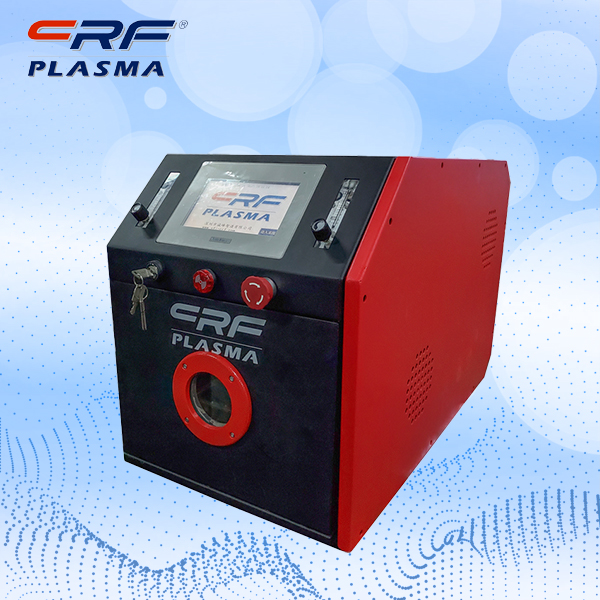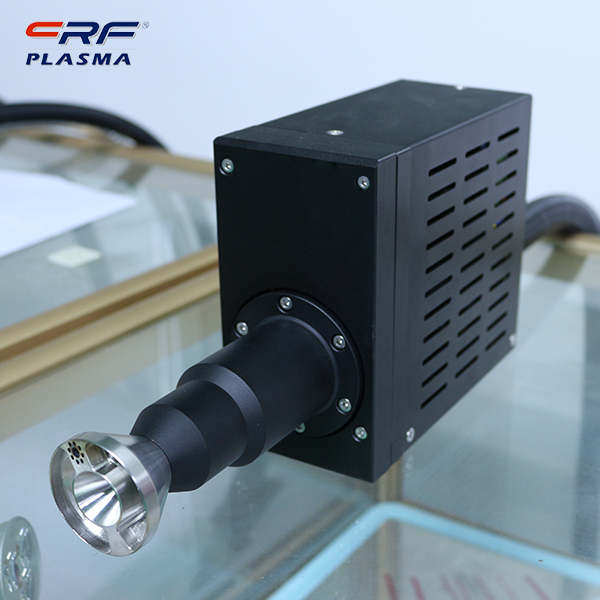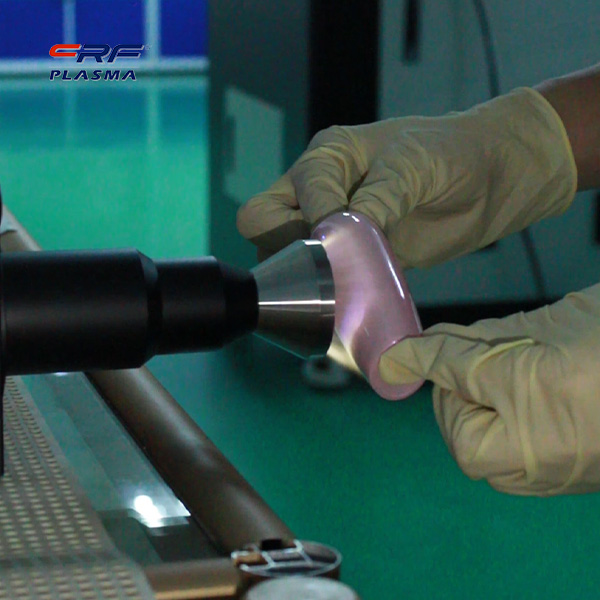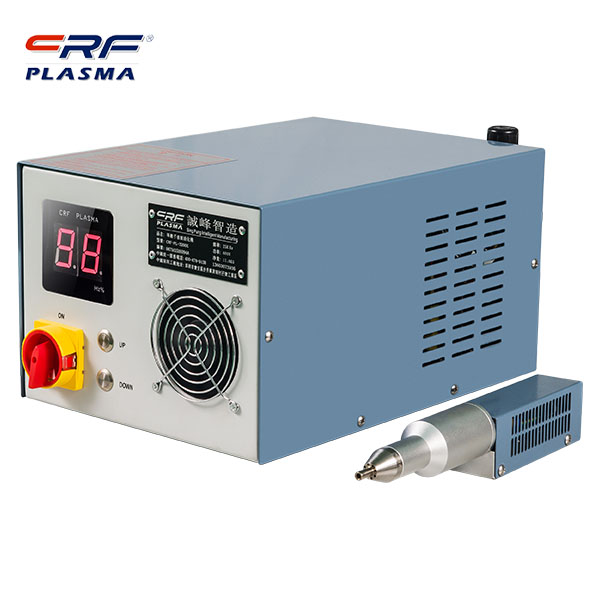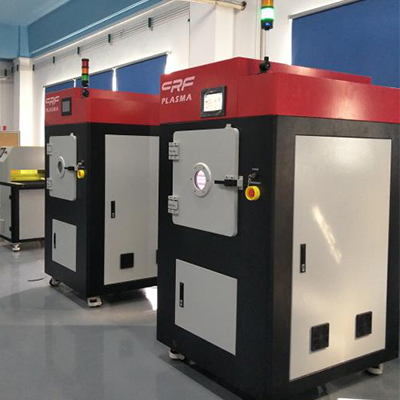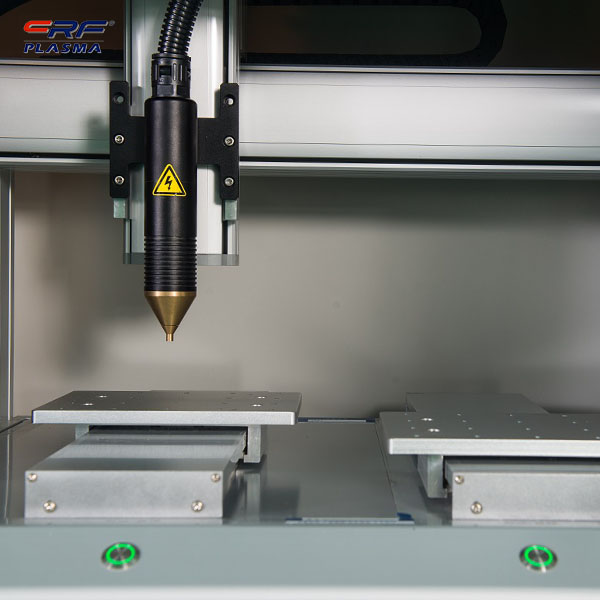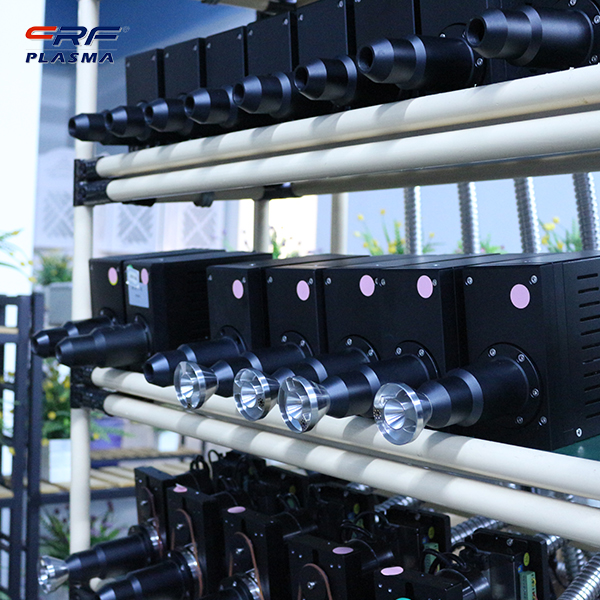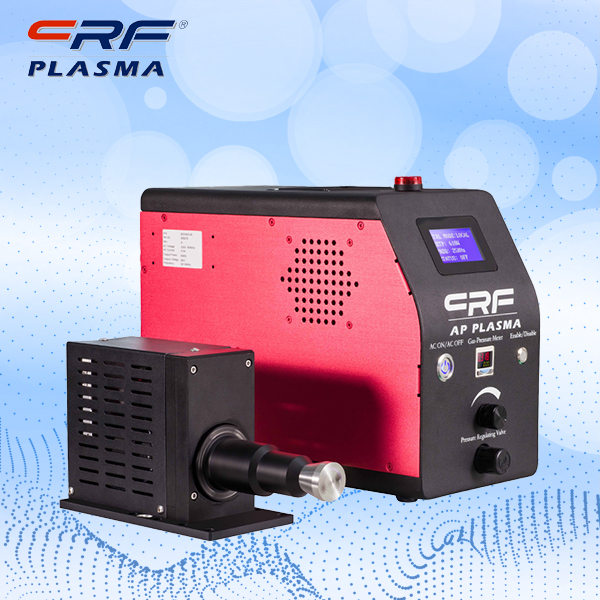
Welcome to Shenzhen Sing Fung Intelligent Manufacturing Co., Ltd.
E-mail:shaobo@sfi-crf.com
Effect of CeO2CO2 loading on ethane conversion reaction under plasma plasma
- Categories:Technical Support
- Author:Plasma cleaning machine-CRF plasma plasma equipment-plasma surface treatment machine manufacturer-chengfeng intelligent manufacturing
- Origin:
- Time of issue:2022-01-27
- Views:
(Summary description)Effect of CeO2CO2 loading on ethane conversion reaction under plasma plasma: Effect of CeO2 loading on ethane conversion reaction under plasma plasma: When CeO2 loading increased from 0 to 10%, C2H6 conversion increased from 33.8% to 42.4%, but further increased CeO2 loading, C2H6 conversion slightly increased There is a decrease. On the contrary, the CO2 conversion decreased with the increase of CeO2 loading. When the CeO2 loading was increased from 0 to 10%, the total yield of C2H4 and C2H2 increased from 12.7% to 21.8%. Therefore, it is necessary to study the conversion reaction of ethane under the combined action of 10% CeO2/Y-Al2O3 and plasma. Plasma plasma 10%CeO2/Y-Al2O3, the effect of CO2 addition on the ethane conversion reaction under the combined action: With the increase of CO2 addition, the ethane conversion rate increases monotonically, which indicates that the addition of CO2 is beneficial to ethane conversion. In the plasma catalytic reaction, C2H6 molecules first inelastically collide with high-energy electrons to generate active species such as CH3 and C2H5. Since the bond energy of the CH3-CH3 bond is 3.8eV and the bond energy of the CH3CH2-H bond is 4.2eV (the average energy of the electrons in the plasma is 6eV), the C2H6 molecule dissociates under the action of the plasma as follows: C2H6 + e* → CH3 + CH3 + e (3-38) C2H6 + e* → C2H5 + H + e (3-39) Similarly, the inelastic collision of CO2 molecules with high-energy electrons causes the C-O bond to break, generating reactive oxygen species: CO2 + e* → CO + O- (3-40) CO2 + e* → CO + O +e (3-41) The inelastic collision of reactive oxygen species and C2H6 molecules will eventually generate C2H4 and C2H2: C2H6+0 →C2H4+H2O C2H6+O- →C2H4+H2O+e (3-42) C2H6+2O→C2H4+H2O C2H6+2O-→C2H2+2H2O+2e (3-43) Therefore, as the amount of CO2 added to the reaction system increases, more oxygen species react with ethane to generate ethylene and acetylene.
Effect of CeO2CO2 loading on ethane conversion reaction under plasma plasma
(Summary description)Effect of CeO2CO2 loading on ethane conversion reaction under plasma plasma:
Effect of CeO2 loading on ethane conversion reaction under plasma plasma: When CeO2 loading increased from 0 to 10%, C2H6 conversion increased from 33.8% to 42.4%, but further increased CeO2 loading, C2H6 conversion slightly increased There is a decrease. On the contrary, the CO2 conversion decreased with the increase of CeO2 loading. When the CeO2 loading was increased from 0 to 10%, the total yield of C2H4 and C2H2 increased from 12.7% to 21.8%. Therefore, it is necessary to study the conversion reaction of ethane under the combined action of 10% CeO2/Y-Al2O3 and plasma.
Plasma plasma 10%CeO2/Y-Al2O3, the effect of CO2 addition on the ethane conversion reaction under the combined action: With the increase of CO2 addition, the ethane conversion rate increases monotonically, which indicates that the addition of CO2 is beneficial to ethane conversion.
In the plasma catalytic reaction, C2H6 molecules first inelastically collide with high-energy electrons to generate active species such as CH3 and C2H5. Since the bond energy of the CH3-CH3 bond is 3.8eV and the bond energy of the CH3CH2-H bond is 4.2eV (the average energy of the electrons in the plasma is 6eV), the C2H6 molecule dissociates under the action of the plasma as follows:
C2H6 + e* → CH3 + CH3 + e (3-38)
C2H6 + e* → C2H5 + H + e (3-39)
Similarly, the inelastic collision of CO2 molecules with high-energy electrons causes the C-O bond to break, generating reactive oxygen species:
CO2 + e* → CO + O- (3-40)
CO2 + e* → CO + O +e (3-41)
The inelastic collision of reactive oxygen species and C2H6 molecules will eventually generate C2H4 and C2H2:
C2H6+0 →C2H4+H2O C2H6+O- →C2H4+H2O+e (3-42)
C2H6+2O→C2H4+H2O C2H6+2O-→C2H2+2H2O+2e (3-43)
Therefore, as the amount of CO2 added to the reaction system increases, more oxygen species react with ethane to generate ethylene and acetylene.
- Categories:Technical Support
- Author:Plasma cleaning machine-CRF plasma plasma equipment-plasma surface treatment machine manufacturer-chengfeng intelligent manufacturing
- Origin:
- Time of issue:2022-01-27 14:57
- Views:
Effect of CeO2CO2 loading on ethane conversion reaction under plasma plasma:
Effect of CeO2 loading on ethane conversion reaction under plasma plasma: When CeO2 loading increased from 0 to 10%, C2H6 conversion increased from 33.8% to 42.4%, but further increased CeO2 loading, C2H6 conversion slightly increased There is a decrease. On the contrary, the CO2 conversion decreased with the increase of CeO2 loading. When the CeO2 loading was increased from 0 to 10%, the total yield of C2H4 and C2H2 increased from 12.7% to 21.8%. Therefore, it is necessary to study the conversion reaction of ethane under the combined action of 10% CeO2/Y-Al2O3 and plasma.
Plasma plasma 10%CeO2/Y-Al2O3, the effect of CO2 addition on the ethane conversion reaction under the combined action: With the increase of CO2 addition, the ethane conversion rate increases monotonically, which indicates that the addition of CO2 is beneficial to ethane conversion.
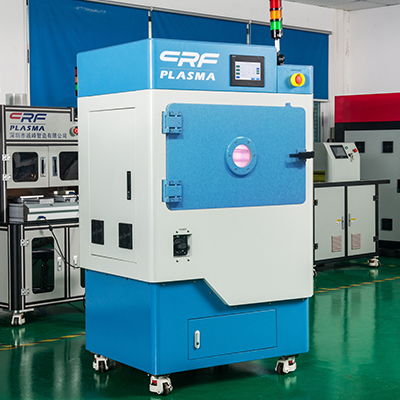 In the plasma catalytic reaction, C2H6 molecules first inelastically collide with high-energy electrons to generate active species such as CH3 and C2H5. Since the bond energy of the CH3-CH3 bond is 3.8eV and the bond energy of the CH3CH2-H bond is 4.2eV (the average energy of the electrons in the plasma is 6eV), the C2H6 molecule dissociates under the action of the plasma as follows:
In the plasma catalytic reaction, C2H6 molecules first inelastically collide with high-energy electrons to generate active species such as CH3 and C2H5. Since the bond energy of the CH3-CH3 bond is 3.8eV and the bond energy of the CH3CH2-H bond is 4.2eV (the average energy of the electrons in the plasma is 6eV), the C2H6 molecule dissociates under the action of the plasma as follows:
C2H6 + e* → CH3 + CH3 + e (3-38)
C2H6 + e* → C2H5 + H + e (3-39)
Similarly, the inelastic collision of CO2 molecules with high-energy electrons causes the C-O bond to break, generating reactive oxygen species:
CO2 + e* → CO + O- (3-40)
CO2 + e* → CO + O +e (3-41)
The inelastic collision of reactive oxygen species and C2H6 molecules will eventually generate C2H4 and C2H2:
C2H6+0 →C2H4+H2O C2H6+O- →C2H4+H2O+e (3-42)
C2H6+2O→C2H4+H2O C2H6+2O-→C2H2+2H2O+2e (3-43)
Therefore, as the amount of CO2 added to the reaction system increases, more oxygen species react with ethane to generate ethylene and acetylene.
Scan the QR code to read on your phone

TEL:0755-3367 3020 / 0755-3367 3019

E-mail:sales-sfi@sfi-crf.com

ADD:Mabao Industrial Zone, Huangpu, Baoan District, Shenzhen




